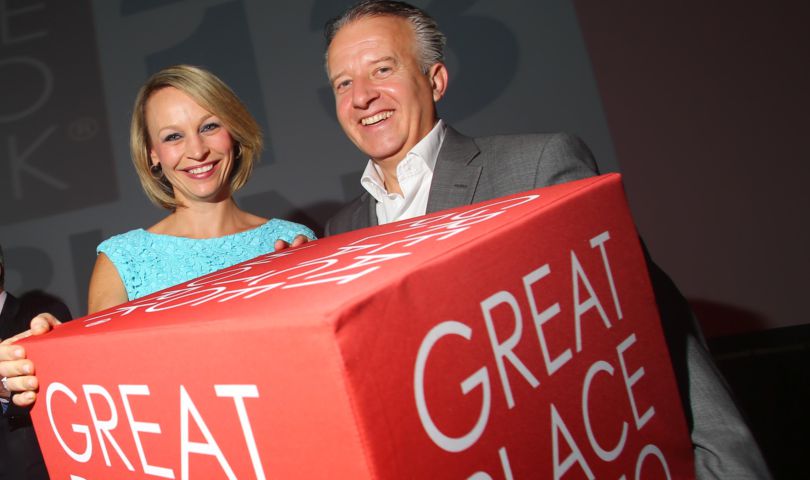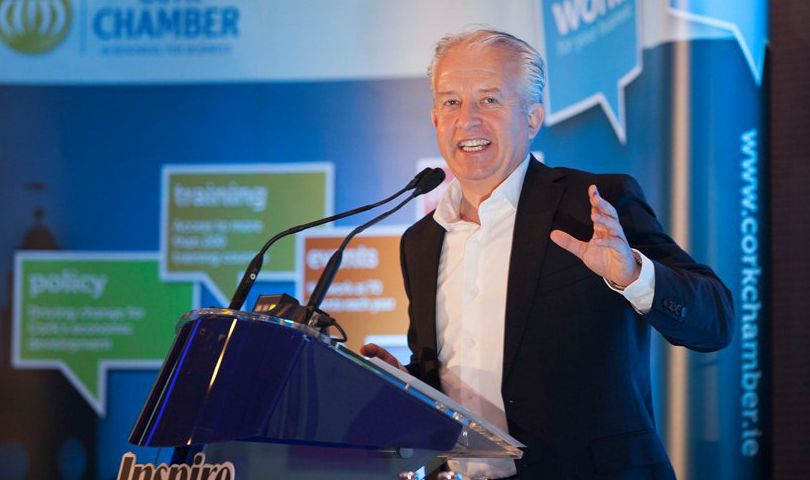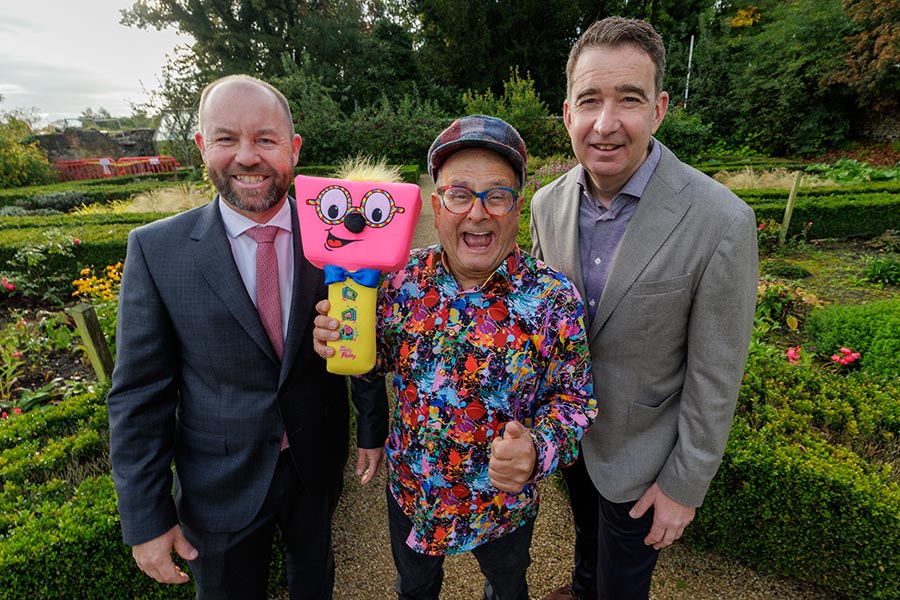Most leaders of people will tell you that their greatest assets are their employees and will wax lyrical about their importance, writes John Ryan, CEO of Great Place to Work.
However, few seem to be able to actually back up these words with actions, and fail to build a powerful sense of commitment and loyalty that provides a real competitive advantage to their organisation.
In my view, there are seven characteristics that the leaders of Best Workplaces around the world are increasingly developing to create high performance organisations.
 John Ryan with Erin Moran of Great Place to Work U.S
John Ryan with Erin Moran of Great Place to Work U.S
Future Shapers People managers are good at implementation - but people leaders truly inspire. They think about the trajectory of current trends that in future may affect and even totally disrupt their industry. They engage in conversations far and wide, and they are open to learning about areas outside of their expertise. They listen and incorporate the views and ideas of their employees, fostering greater employee commitment to the resulting strategy. People follow these leaders because they tend to identify the correct trends, estimate their impact, and adjust their organisations to maximise the available opportunities.
Culture Amplifiers You can't see it and you can't completely control it, but its impact is pervasive. Most leaders now understand the benefits of a positive culture. They define it, build practices that support, in short, they don't leave it to chance. They constantly use tools to measure it, and they invest in it. Great people leaders know that they themselves have a responsibility for setting the tone from the top through their actions, and are willing to take tough decisions to deal with those who are seen to be renegades.
Vision Translators Often leaders tell us that they are too busy keeping the 'show on the road' to work on the 'vision thing'. However, if the vision isn't compelling, the troops will be missing a key driver for their performance - they'll be missing a sense of purpose. Beyond a certain point, purpose beats pay every time when it comes to what really matters to employees. Vision isn't a once a year event. It has got to be live, authentic, and front of mind in everything a leader does. Great leaders translate often complex vision into something that all employees can grasp, buy in to, and see the role that they play in achieving.
Trust Builders While money was the currency of success in the past, a leader's ability to build trust will determine their future success. However, trust is not some amorphous concept - rather, it is a set of tangible behaviours and competencies that leads to people recognising your leadership as legitimate, and becoming willing followers. Positional power has lost its impact, particularly with the millennial generation. Now, leaders who demonstrate their competence, deliver on their promises, whose actions match their words, who show appreciation, who have high levels of integrity, and who are viewed as benevolent will receive a trust dividend. This translates into higher overall organisational performance through lower regretted losses, higher productivity, less conflict, greater innovation, and other business benefits.
Democratically Driven In one of the biggest trends we're identifying on a global level, organisations are giving more control to employees, choosing what projects they'll work on, with whom they work, choosing their direct boss... even electing the CEO! If a leader truly wants an empowered organisation where front line employees are able take personal responsibility for their decisions, distributing power is worth investigating.
Transparency Transponders The highly networked nature of the world we live in means that every employee has a potentially global reach. Great leaders default to sharing information. Board minutes, salary information, senior teams personal performance goals (and scores). Their intranet is home to the expense account of every employee - including the CEO. In fact, some organisations share so much financial information, that their employees are deemed to be insider trading if they buy and sell shares!
Recognition Givers Finally great leaders are obsessed with performance - differentiating performance, monitoring high performance, aligning behaviours and values, and identifying those who are delivering on all counts. They understand the frustration felt by talented individuals when they see the poor performance of a colleague not being managed. These leaders understand the power of simply saying well done, and make use of a full range of reward and recognition best practices to do so.
These are the actions that today's great leaders are doing with consistency - building deep loyalty, strong employee commitment, and a high performance culture. As your human assets, are often your greatest financial investment, it's crucial that your leadership brings the greatest possible return.











